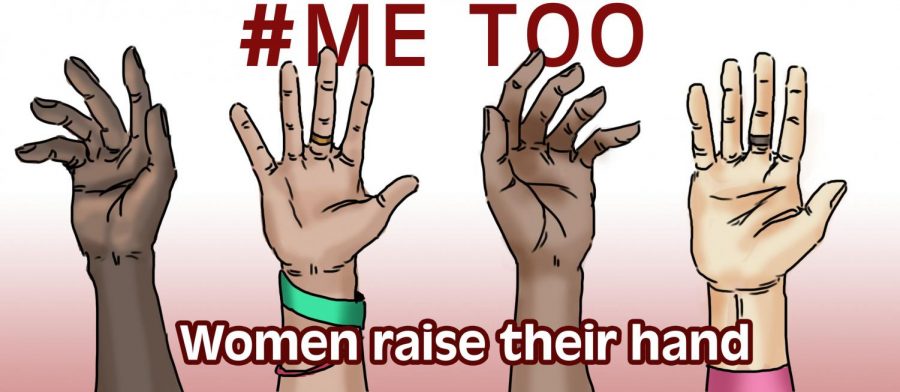#MeToo encourages others to share their stories
December 1, 2017
Sexual harassment, whether it be catcalls, unwanted sexual contact, or rape, is something that affects millions of people. End Sexual Violence’s statistics show that “One in four women and one in six men will be sexually assaulted in their lifetime.”
The “Me Too” hashtag movement has brought awareness to sexual harassment and given people a voice to share their stories and support.
Actors and public figures have spoken out about their experiences with assault and have called out some of their harassers.
In an Atlantic article, “The Movement of #MeToo” by Sophie Gilbert, Gilbert said, “recent revelations about the alleged abuses of Weinstein and Bill Cosby and Jimmy Savile and R. Kelly have proven that truth has power.”
The movement has shown how widespread sexual harassment is and has normalized speaking up in order to decrease harassment.
A survey done by the Washington Post showed that “one in three women between the ages of 18-34 has been sexually harassed at work.”
Ruth Ann Falls, business teacher, shared her experience of sexual harassment as a teenager at her first job. She said, “there was an individual who was very flattering, stalking” and “it seemed like everywhere I went, I would turn around and he was there.”
Falls remembered feeling uncomfortable, but scared about losing her job, so she “tried to stay away from him and deny the fact that it was happening.”
When Anita Hill, attorney, spoke out about Clarence Thomas, Supreme Court justice nominee at the time, sexually harassing her, it was an epiphany for Falls.
She said, “that was the first time I realized how wrong it was and that it was okay to speak out.”
Jennifer Schlicht, psychology teacher, experienced sexual harassment her first year of teaching. The male teacher she shared an office space with sexually harassed her by whispering things in her ear and grabbing her without her consent.
Schlicht said, “I’m 23; I didn’t say anything because I can get fired for any reason. I didn’t want to be a troublemaker. I didn’t want people to think I’m making it up or doing anything to provoke him.”
Because of the harassment, Schicht said, “I got to the point where I didn’t go into our office space during my plan period because I didn’t want to be alone in a room with him.”
After the end of the year, the co-worker got a job at a different school. Schlicht explained that if she were to have this experience now, it would have been very different and she would take action.
The most common forms of sexual harassment are catcalls and unwanted verbal remarks.
Lauren Hannon, English teacher, experienced numerous instances of verbal sexual harassment in college. When she would be out with friends or in the city and they received unwanted verbal sexual harassment, they would sometimes speak back, telling the harasser that it was not okay.
Hannon said, “when we would do that, we typically would be reprimanded for standing up for ourselves, instead of the actions stopping like we wanted.”
She explained that ignoring it would not stop the comments, but standing up against the harasser would bring even more attention.
When asked about ways to stop sexual harassment, Hannon explained the importance of educating people on sexual harassment and the fact that even catcalls are sexual harassment.
Hannon said, “It becomes normalized if we say ‘oh, it’s just a comment it’s okay’” and that “even just a little comment is kind of like a gateway to larger acts of sexual harassment.”
Sexual harassment is an issue that is far from being nonexistent, but the #MeToo movement is a step in the right direction by encouraging victims to speak up, holding accusers accountable and educating on what sexual harassment consists of.

